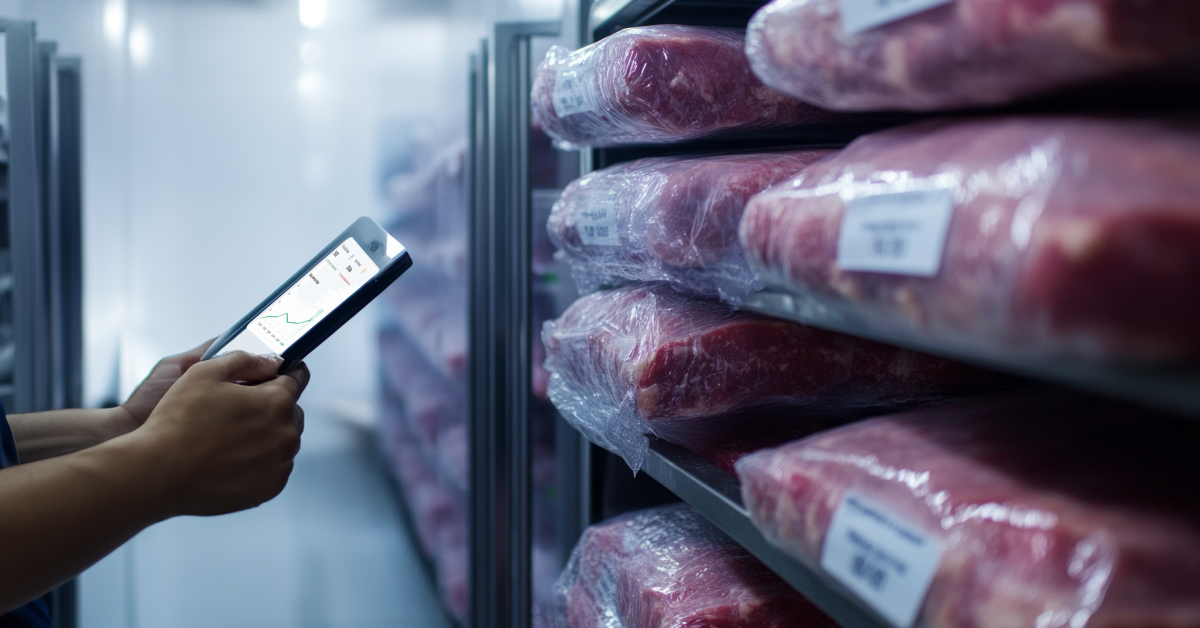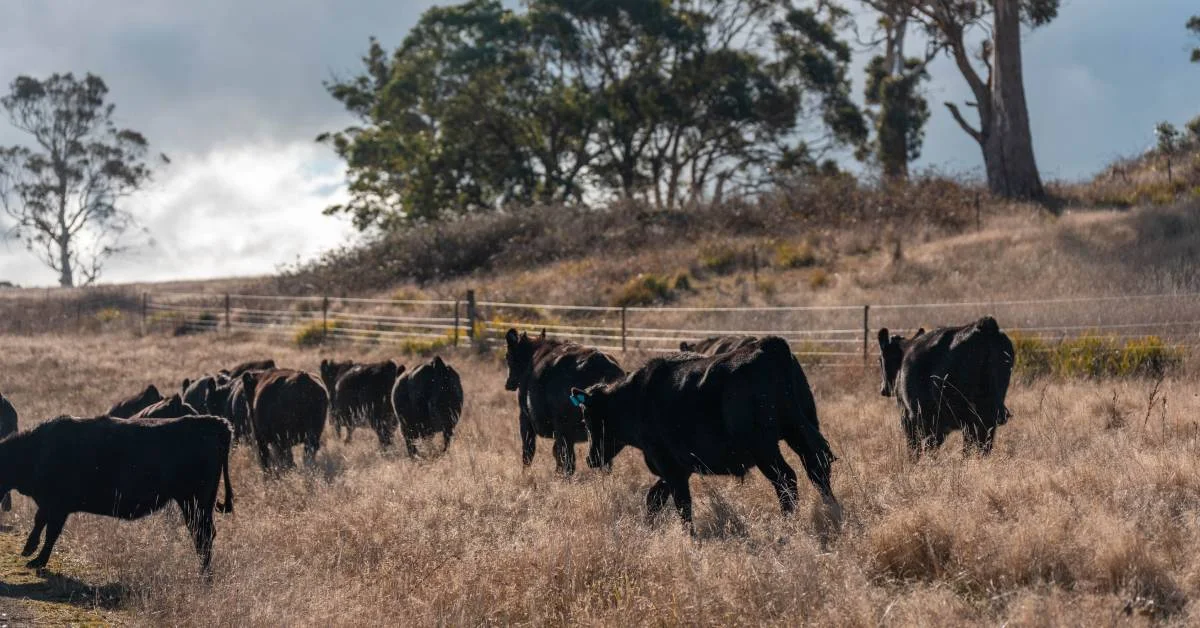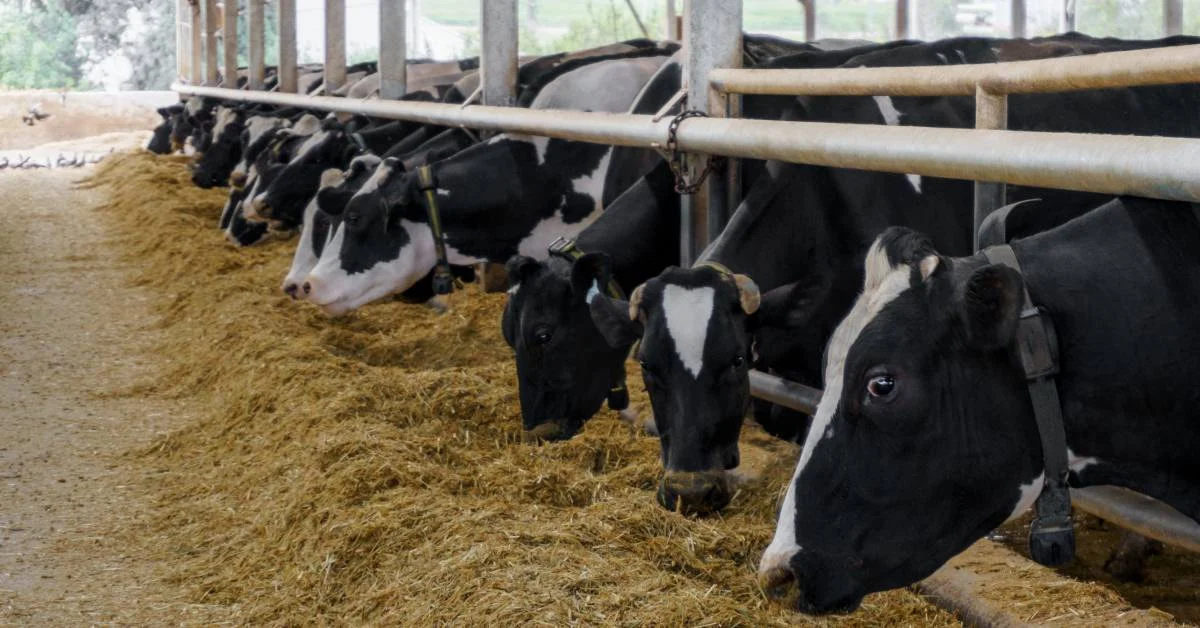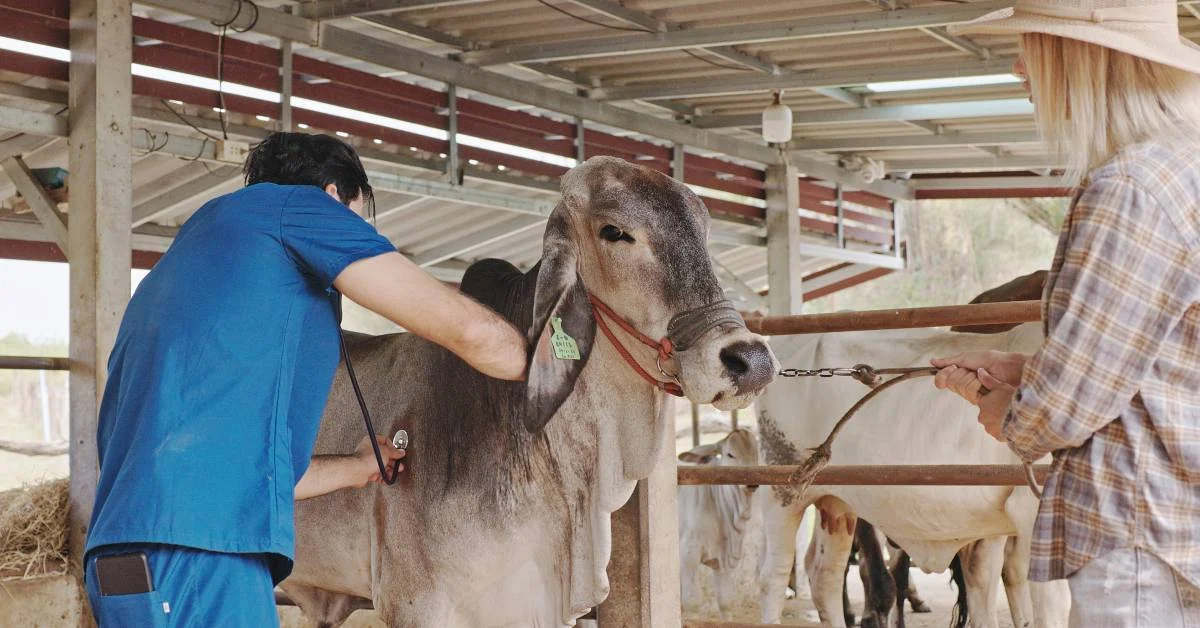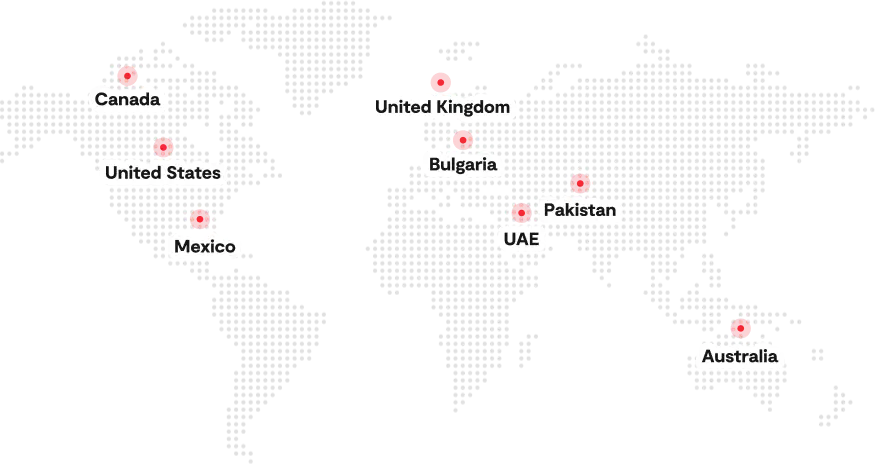In the U.S., a significant amount of fresh produce still fails to reach consumers. Whether it’s vegetables, fruits, meat, seafood, or dairy products, a significant portion is lost between harvest and the retail shelf, not because of poor yield but due to breakdowns in cold storage and transport. While large-scale agribusinesses are investing in real-time temperature monitoring and predictive systems, small to mid-sized growers often lack access to even the essential infrastructure: pre-cooling facilities, mobile cold units, or integrated fresh produce ERP systems.
Cold chain agriculture logistics is already a $91.14 billion market in the U.S., and it’s expected to grow to $109.77 billion by 2030 at an annual rate of 6.7%. This growth isn’t just driven by grocery retailers, it’s also powered by rising demand for fresh, temperature-sensitive products across e-commerce, meal kits, and direct-to-consumer channels.
But with growing consumer demand for fresher, safer, and more traceable food, the pressure to modernize cold chain agriculture has never been higher.
This blog unpacks:
- The ground-level realities and pain points producers and distributors face today
- The innovations transforming cold logistics into a more responsive, connected system
- What the next 5–10 years could realistically look like for stakeholders across the chain
What is Cold Chain in Agriculture?
Cold chain agriculture refers to the use of temperature-controlled environments throughout the post-harvest lifecycle of perishable agricultural products. This includes pre-cooling at the field level, cold storage in packhouses or distribution centers, refrigerated transportation, and sometimes even temperature-managed retail points. Its primary function is to preserve freshness, maintain nutritional value, prevent microbial growth, and extend the marketable life of produce like berries, leafy greens, dairy, and meat.
Unlike general logistics, cold chain agriculture requires uninterrupted refrigeration from origin to destination, often with specific temperature zones based on commodity type. Even minor fluctuations like a 2°C rise in transit can impact product safety or lead to regulatory non-compliance. This is why cold chain infrastructure is considered non-negotiable for high-value crops and export-focused producers.
Role of Cold Chain in the Agricultural Supply Chain
In today’s highly time-sensitive and quality-driven food supply chain, cold chain agriculture is no longer just a support function; it’s central to how agricultural products retain value from farm to fork. Whether it’s reducing waste, ensuring traceability, or enabling faster delivery to high-demand markets, the cold chain touches every logistical checkpoint that matters.
Here’s how cold chain infrastructure enables critical functions across the agricultural supply chain:
- Post-Harvest Quality Preservation
With the help of modern harvest management software, you can monitor the immediate pre-cooling and cold storage as it helps reduce respiration rates in fresh produce, slowing spoilage and preserving color, texture, and nutritional value during transit. - Reduced Post-Harvest Losses
By stabilizing environmental conditions during handling and distribution, cold chain systems minimize microbial spoilage, dehydration, and physical damage, key drivers of food loss. - Regulatory Compliance & Food Safety
Many commodities require strict adherence to temperature thresholds during shipping. A resilient cold chain ensures compliance with FSMA and HACCP protocols, particularly for exporters and multi-state distributors. - Improved Stock Rotation & Inventory Planning
Products with different shelf lives can be managed more effectively when cold chain logistics are integrated with real-time tracking tools. Inventory management systems help ensure FIFO/FEFO protocols are actually followed, reducing write-offs and unsellable stock. - Faster Market Access & Distribution Agility
Cold chain agriculture enables producers to meet the expectations of e-commerce buyers, wholesalers, and national grocery chains that demand consistent, ready-to-shelf quality across regions. - Enhanced Traceability & Recall Readiness
Temperature logs and traceable movement records across the chain not only support food safety audits but also reduce exposure during potential product recalls.
Together, these functions transform cold chain agriculture into a core enabler of operational efficiency, food integrity, and market competitiveness.
Current Cold Chain Challenges in Agriculture
Despite advancements in technology and infrastructure, cold chain agriculture continues to face persistent and costly challenges that impact efficiency, profitability, and product integrity. For producers, packers, and distributors, even minor breakdowns in the chain can lead to rejected loads, compliance violations, or significant losses tied to spoilage and shelf-life deterioration.
Here are the most pressing challenges facing cold chain agriculture today:
Fragmented Systems & Lack of Integration
Many operations still rely on siloed systems for production, storage, and transportation. This fragmentation creates visibility gaps, making it difficult to monitor temperature logs, identify deviations in real-time, or respond proactively to risk. As the industry shifts toward precision logistics, poor data integration is emerging as a major performance barrier.
Limited Infrastructure at the Farm Level
While centralized cold storage and transportation hubs are expanding, many farms, especially in more rural or seasonal regions, lack access to pre-cooling facilities or mobile refrigeration. Without early-stage cold chain intervention, product degradation often starts before shipping even begins.
Rising Energy and Maintenance Costs
Cold storage units and refrigerated trucks consume significant energy, and inflationary pressure has only worsened the operating costs. Keeping systems efficient while meeting sustainability goals is an ongoing balancing act for agricultural businesses.
Labor Gaps and Skill Shortages
Maintaining a cold chain isn’t just about machines, it’s also about people. Many producers face labor shortages in handling, monitoring, and troubleshooting cold chain assets. Inadequate training further increases the risk of spoilage due to improper loading, storage, or mismanagement of temperature-sensitive goods.
Unpredictable Inventory Dynamics
Surpluses, seasonality, and evolving buyer expectations (like DTC cold deliveries or same-day grocery orders) demand more agile cold chain planning. However, most operators still manage inventory with limited forecasting insights or static models. As covered in The Ultimate Guide to Inventory Planning, aligning inventory workflows with cold chain realities can reduce losses and improve stock turnover.
Compliance Complexity & Recall Risk
Regulations around temperature-sensitive commodities are tightening. Failure to maintain cold chain integrity can now trigger recalls, audits, or export rejections. Producers are under pressure to log, track, and validate every touchpoint, often without the digital infrastructure to do so confidently.
Cold chain agriculture is at a crossroads: expanding in scope, but constrained by legacy processes, cost burdens, and operational gaps. Addressing these challenges requires not just hardware upgrades, but smarter workflows, connected systems, and better-informed planning at every stage of the chain.
How Agricultural Cold Chain Challenges Are Being Addressed
While the structural gaps in cold chain agriculture are significant, innovation across the U.S. agri-supply chain is starting to close them. From smart sensors to decentralized cooling and blockchain-led traceability, producers and distributors are increasingly equipped to tackle cold chain weaknesses with scalable, tech-enabled solutions.
Use of IoT and Sensors in Cold Chain Management
Cold chain performance used to rely on periodic manual checks or post-delivery inspections. Today, IoT sensors in agriculture are transforming this model by enabling real-time monitoring of temperature, humidity, and even shock or light exposure, across storage units, transport vehicles, and last-mile carriers.
These sensors are particularly impactful in multi-stop or long-haul shipments, where single-degree deviations can cause product rejection. Operators can now receive alerts for temperature breaches instantly, allowing them to intervene before product quality is compromised.
Mobile Refrigeration and Off-Grid Solutions
One of the biggest hurdles in cold chain agriculture is the lack of first-mile cooling capacity, especially in remote or underserved growing regions. Traditional cold storage facilities are often centralized, leaving smaller or seasonal growers with few options to maintain product integrity immediately post-harvest.
To address this, mobile refrigeration units and off-grid cold rooms powered by solar energy are gaining traction. These solutions offer flexible deployment at or near the field level, reducing the time between harvest and pre-cooling, a critical window for preserving shelf life in temperature-sensitive produce.
Off-grid cooling also opens new doors for mid-sized operations to meet higher retail standards without massive infrastructure investment. For producers in high-temperature zones, this is a direct enabler of participation in premium supply chains.
Blockchain for Transparency and Traceability
As food safety regulations evolve and consumers demand more visibility, blockchain technology in agriculture is being used to bring transparency to every handoff in the cold chain. Each node, from harvest, storage, transit, to retail, can be logged as a verifiable transaction, complete with environmental data, time stamps, and chain-of-custody records.
For high-value cold chain agriculture categories like leafy greens, berries, or seafood, this means reduced audit friction, faster recalls if needed, and improved buyer confidence. Unlike traditional record-keeping, blockchain ensures data integrity and traceability across distributed systems, even when multiple logistics providers are involved.
Cold chain agriculture is undergoing a shift, from reactive to predictive, from centralized to mobile, and from opaque to transparent. These solutions aren’t just technical upgrades, they’re enablers of higher-quality, lower-waste, and more resilient agricultural operations.
Future Trends in Cold Chain in Agriculture
Cold chain agriculture is evolving from a logistical support function into a strategic differentiator for growers, suppliers, and agri-distributors alike. As consumer expectations shift, regulatory scrutiny increases, and retail models diversify, the future of the cold chain will be defined not just by refrigeration hardware, but by the digital intelligence and operational agility behind it.
1. Integration with End-to-End Digital Supply Chains
The future of cold chain agriculture lies in connected ecosystems, where ERP, inventory planning, cold storage monitoring, and transport scheduling all sync in real time. Instead of managing cold chain data in isolation, forward-looking farms and distributors are embedding it directly into their digital infrastructure.
This trend ties directly into the role of ERP in agricultural supply chains, where traceability, temperature monitoring, and quality logs feed into centralized systems that guide smarter inventory and recall decisions.
2. Cold Chain-Ready Agriculture Ecommerce
The rise of direct-to-consumer (DTC) channels for fresh produce and speciality goods is putting cold chain systems under pressure to deliver smaller, faster, and more precisely timed orders. From meal kits to overnight greens, agricultural ecommerce is rewriting cold logistics expectations.
Agriculture ecommerce trends highlight that success in these models depends on more than packaging; it hinges on how flexibly cold chain assets can scale, route, and fulfil without waste.
3. Smarter Inventory Logic for Perishable Goods
Gone are the days of basic FIFO inventory. The future requires condition-based inventory planning, accounting for shelf life, transit times, demand shifts, and market pricing in real time. Cold chain agriculture will increasingly rely on systems that can reprioritize lots based on temperature exposure or spoilage risk.
This shift also increases the importance of dynamic stock rotation, predictive alerts, and real-time adjustments, especially when working across multiple storage zones or transit windows.
4. Decentralized Cold Storage Models
With urban demand growing and supply chains diversifying, there’s a clear move toward micro-fulfilment cold storage hubs closer to consumption centers. These facilities allow for faster replenishment, lower transport emissions, and shorter holding times, a key strategy for reducing shrinkage in highly perishable categories.
Cold chain agriculture in the next 5 years will likely blend centralized processing with hyper-local execution, where technology bridges the coordination gap.
5. Crop-Level Environmental Intelligence
Future-ready cold chains will start before the harvest. By using tools like climate-based forecasting, real-time field monitoring, and predictive maturity models, growers can better plan for post-harvest logistics and reduce the risk of overloading limited cold storage.
This level of precision is only possible with advanced crop management software that aligns field conditions with harvest timing, storage needs, and fulfillment cycles.
6. Integration of Cloud-Based Platforms for Real-Time Tracking
Historically, temperature data was logged manually or siloed within hardware systems. Now, cloud-based cold chain platforms are enabling centralized oversight of temperature, humidity, and location data across all stages of the supply chain, from pack house to last-mile delivery.
This integration transforms cold chain agriculture into a real-time, intelligent operation. Producers can view cold room conditions, respond instantly to excursion alerts, or verify delivery compliance across multiple buyers and markets, all from a single dashboard.
Cold chain agriculture is no longer about staying cold; it’s about staying connected, predictive, and responsive. Those who digitize early and align their cold chain with inventory, field, and ecommerce data will not only minimize loss but capture margin opportunities others miss.
How Folio3 AgTech’s Agricultural Supply Chain Software Enhances Cold Chain Efficiency
Folio3 AgTech’s agricultural supply chain software isn’t a general-purpose tool retrofitted for farming; it’s purpose-built to solve the exact challenges cold chain agriculture faces today. Here’s how we enable faster, smarter, and more reliable cold chain operations from harvest to delivery:
- Aligns inventory movement with cold chain needs
Inventory workflows are optimized for perishables, accounting for product shelf life, hold time, and temperature thresholds across storage and transit. No guesswork, no manual overrides. - Improves decision-making through real-time cold chain visibility
Enables live monitoring of product movement, cold room conditions, and shipment status through a unified system, reducing the lag between problem detection and action. - Supports traceability at every handoff
Tracks each lot’s journey from field to final dispatch, including temperature logs, packaging conditions, and storage zones, ensuring audit-ready transparency and faster recall response. - Bridges the gap between field data and post-harvest planning
Integrates harvest schedules, crop maturity stages, and quality parameters with cold chain logistics, helping producers plan storage capacity and transport needs in advance. - Automates compliance with cold chain SOPs
Customizable workflows enforce temperature checks, inspection steps, and documentation, reducing reliance on manual records and lowering non-compliance risk. - Reduces shrinkage and improves margin protection
By connecting pre-harvest planning, cold storage performance, and distribution timelines, the system minimizes spoilage, overstocking, and delayed loads, directly protecting the bottom line. - Simplifies coordination across distributed supply chain teams
Whether it’s a packhouse manager, QA lead, or transport coordinator, all stakeholders access the same platform, the same data, leading to faster decisions and fewer errors.
Folio3 AgTech’s platform doesn’t just digitize cold chain agriculture; it connects the field, storage, transport, and reporting in ways that drive real operational gains.
Conclusion
As agriculture enters an era of higher consumer expectations, stricter regulations, and shorter delivery windows, cold chain management is no longer a back-end function. From safeguarding freshness and reducing waste to enabling full traceability, cold chain agriculture is the invisible infrastructure holding the supply chain together.
But solving cold chain inefficiencies requires more than installing coolers or buying reefer trucks. It takes system-level thinking: aligning inventory workflows, integrating field data, automating SOPs, and gaining real-time oversight of every step, from harvest to handoff.
For agricultural businesses looking to modernize their operations, compete in high-value markets, and protect their product quality at scale, the time to invest in smarter cold chain systems is now, not after the next shipment goes bad.
FAQs
What Is A Cold Chain In Agriculture, And Why Is It Important?
Cold chain in agriculture refers to a temperature-controlled supply system that maintains the freshness, safety, and shelf life of perishable farm products. It begins immediately after harvest and continues through storage, transport, and delivery. It’s crucial because even minor temperature deviations can lead to rapid spoilage, quality loss, and failed compliance with food safety standards.
How Can Technology Help Improve Cold Chain Management In Agriculture?
Technology enables real-time tracking, predictive maintenance, automated temperature alerts, and digital traceability. IoT sensors, ERP systems, and cloud platforms help link field-level data with storage and distribution insights, allowing teams to react quickly and minimize risk. These tools also help meet regulatory and audit requirements with better accuracy and less manual effort.
What Are The Benefits Of Cold Chain Systems In Agriculture?
Efficient cold chain systems reduce food waste, improve shelf life, maintain nutritional quality, and open access to premium retail or export markets. They also improve traceability and compliance, reduce shrinkage, and protect brand reputation. For producers, this translates to better margins and more stable customer relationships.

